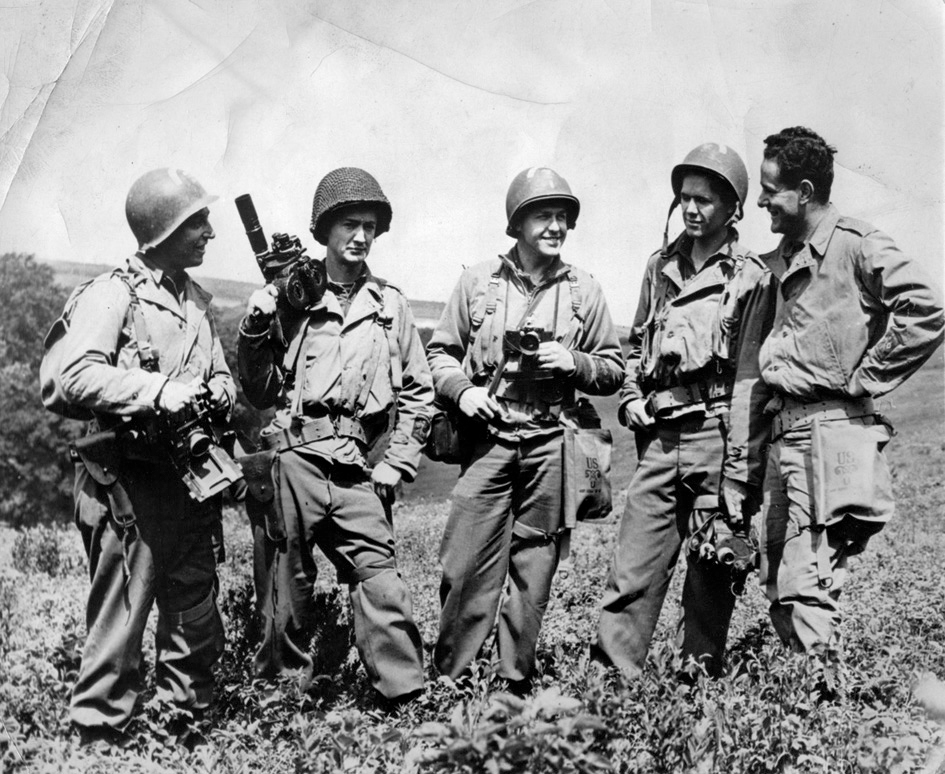
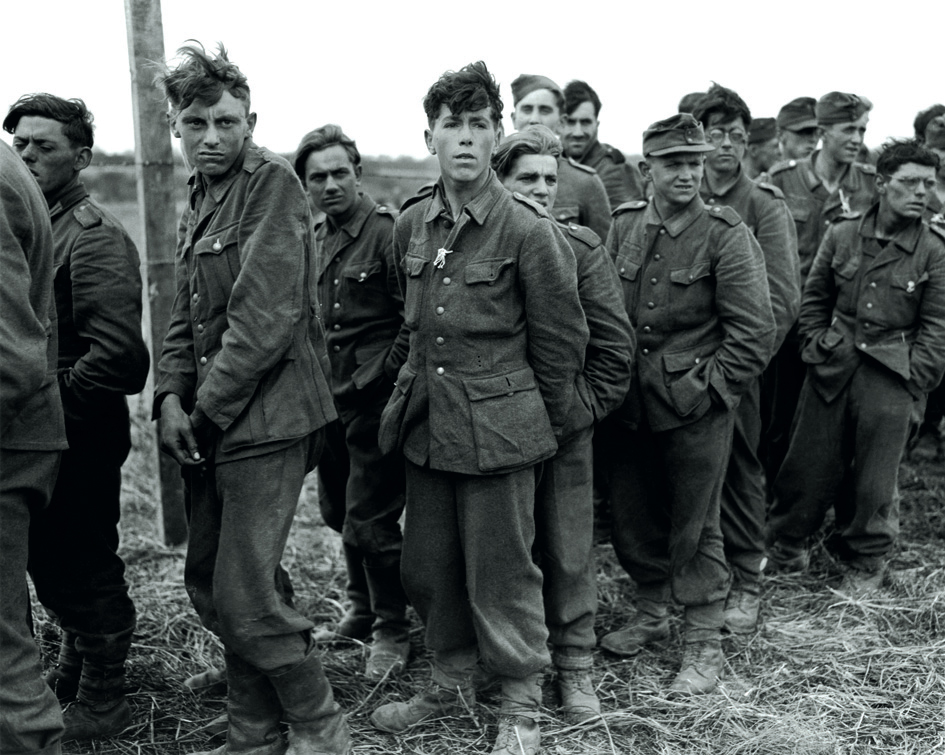
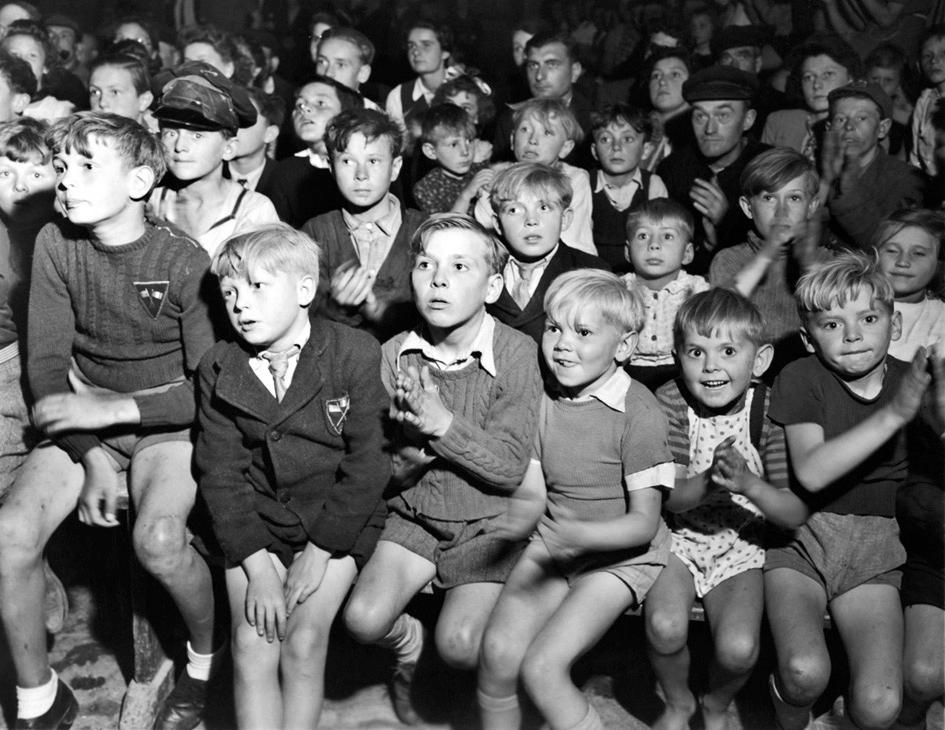
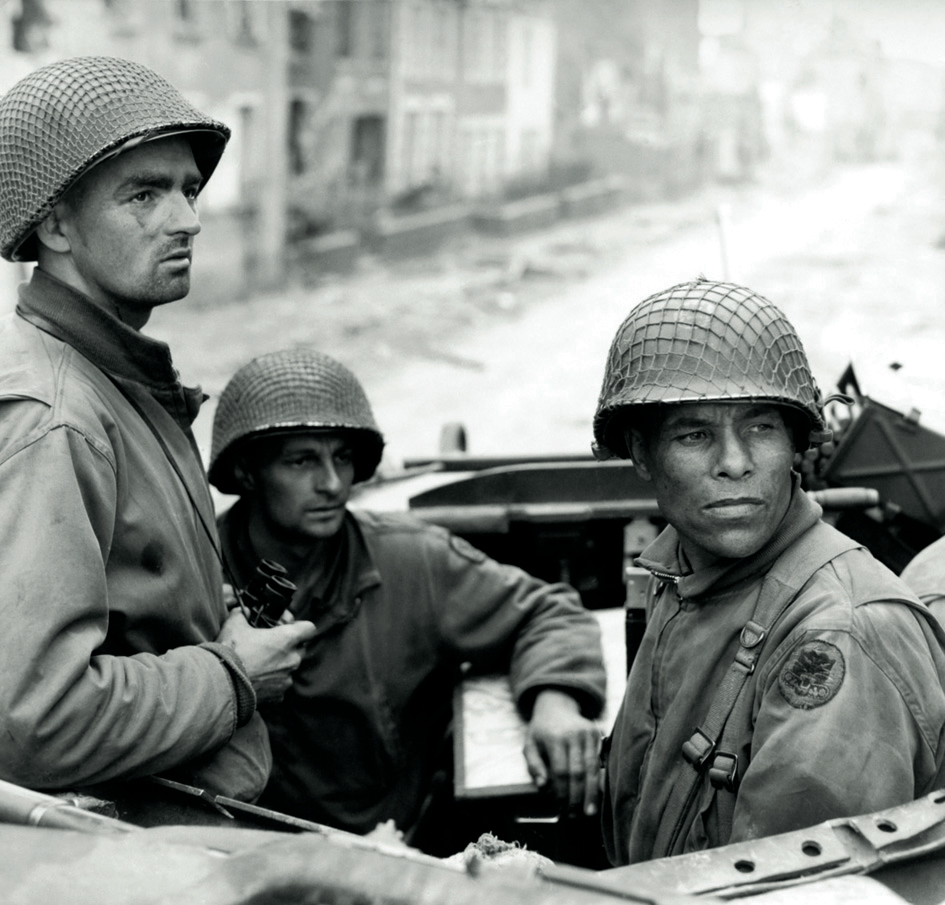
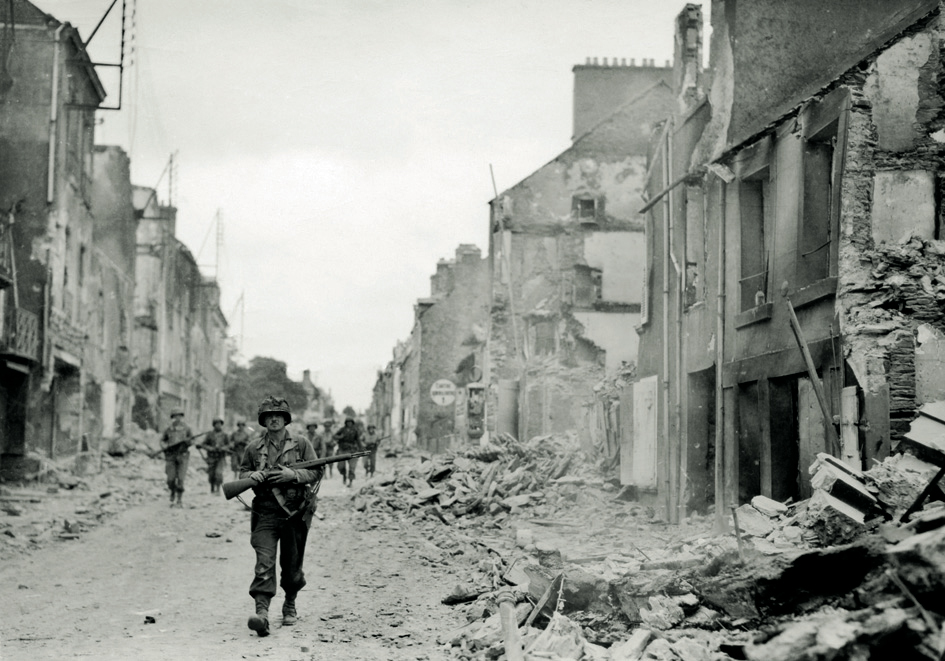

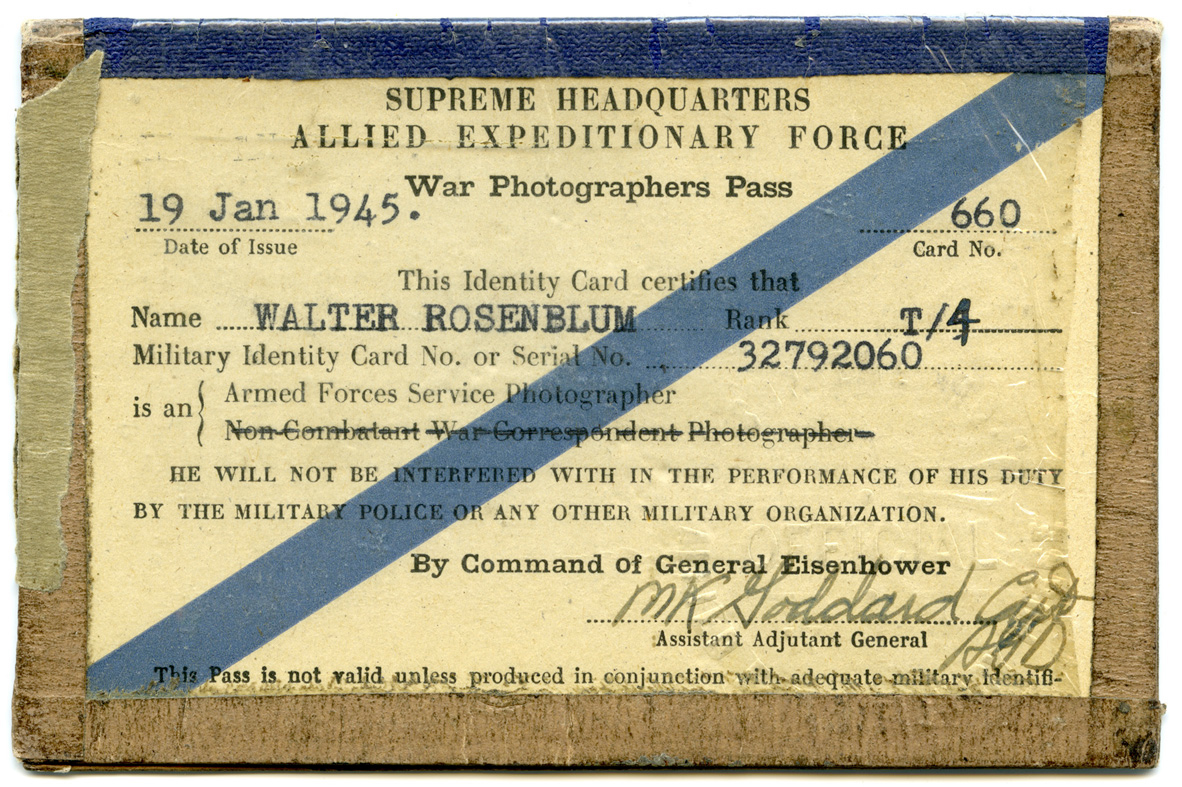
THEY FIGHT WITH CAMERAS
….Walter Rosenblum
a cura di Manuela Fugenzi
22 Novembre - 19 Dicembre 2014
Tra il 6 giugno 1944 e il 7 maggio 1945 (fine della Seconda Guerra Mondiale in Europa), Walter Rosenblum prestò servizio nell’esercito americano, come fotografo e cineoperatore, in un’unità formata da cinque uomini e ufficialmente chiamata Detachment ‘P’ 163rd Signal Photographic Company. Insieme ai suoi commilitoni, Rosenblum sbarcò in Normandia a Omaha Beach durante il D-Day e per undici mesi, fino alla fine della guerra, documentò i combattimenti attraverso fotografie e filmati, tanto da meritare medaglie al valore come la purple heart, la silver star e la bronze star.
Nel 1942, quando fu arruolato nell’esercito, Rosenblum era un giovane fotografo e lavorava come assistente di Eliot Elisofen, un fotografo di Life che aveva conosciuto alla Photo League. Questa organizzazione, di cui Rosenblum era entrato a far parte all’età di 18 anni, divenne il centro della sua esistenza per i 15 anni successivi. Lì Lewis W. Hine e Paul Strand furono i suoi maestri, studiò con Sid Grossman e incontrò figure di spicco come Weegee, Aaron Siskind, Beaumont e Nancy Newhall, Berenice Abbott e Elizabeth McCausland, con cui intrattenne una corrispondenza mentre era al fronte.
Arrivato in Inghilterra all’inizio del 1944, Rosenblum fu immediatamente assegnato ai laboratori dell’APS (Army Pictorial Service) di Londra in qualità di tecnico di camera oscura. Ebbe inoltre modo di fotografare le visite dei generali Eisenhower e Patton ad alcuni campi di addestramento e centri ricreativi dell’esercito statunitense. Le attività di documentazione fotografica svolte dal Detachment P il giorno dello sbarco in Normandia e il successivo (D-Day e D-Day+1) sono descritte nello storico rapporto redatto da Rosenblum il 21 giugno 1944. La mattina del 7 giugno il distaccamento di Rosenblum s’imbatté in un gruppo d’ingegneri della 5th Engineers Special Brigade mentre aiutavano gli uomini a bordo di un’imbarcazione LCP (usata per lo sbarco di truppe) in avaria a mettersi in salvo con l’aiuto di una fune e di un remo di gomma. Insieme alle “magnifiche 11” di Robert Capa (pubblicate sulla rivista LIFE il 19 giugno), il filmato e le fotografie del salvataggio di Omaha Beach divennero immediatamente delle icone, e conservano lo stesso valore ancora oggi. Questi materiali tuttavia vennero prodotti il 7 giugno e non il giorno dello sbarco (6 giugno). L’Army Pictorial Service aveva deciso di anticipare la data dell’evento di un giorno! Una copertura? Indubbiamente. Eppure lo spettatore moderno dovrebbe tenere presente che allora il primo dovere non era nei confronti della storia, ma del morale e delle pubbliche relazioni.
L’eccezionale carriera di Rosenblum come fotografo durante la guerra fu interrotta il 20 settembre 1944, quando il sergente Val Pope – uno dei due cineoperatori dell’unità – venne ucciso da una mitragliatrice tedesca e Rosenblum prese il suo posto. Il sergente Pope era stato in Inghilterra in licenza poco tempo prima e in un cinema di Londra aveva visto, all’interno di un cinegiornale, il filmato del salvataggio che lui stesso aveva girato.
Rosenblum, Louis Weintraub e Francis P. Lee si erano congratulati con lui – in fondo avevano tutti documentato lo stesso evento! Che Rosenblum avesse avuto modo di alternare occasionalmente la macchina fotografica alla cinepresa già prima di prendere il posto di Pope sembra testimoniato dalla foto di gruppo con il ministro della Guerra Stimson [17 luglio], dove lo si vede con in mano una cinepresa, così come Herb Shannon (il secondo uomo seduto da destra), che infatti aveva appena filmato il pranzo di Stimson con i generali Bradley e Patton.
La cronologia (in mostra) permette allo spettatore di seguire il percorso di Rosenblum durante la campagna di Normandia e di ripercorrere i luoghi da lui fotografati: la spiaggia di Omaha Beach, Colleville-sur-Mer, Grandcamp-Maisy, Caen, Saint Lô. Grazie alla sua indole e alla sua formazione, le fotografie di Rosenblum offrono un ritratto estremamente umano della guerra – ecco qui i volti dei giovani eroi che avevano attraversato un oceano per combattere ciò che alcuni autori sovietici chiamavano “la bestia nazista”. “Che cosa può Hitler contro uomini come questi?” si chiedeva Rosenblum. La risposta era: assolutamente nulla.
Daniel Allentuck
BIOGRAFIA WALTER ROSENBLUM
Walter Rosenblum (New York City, 1919–2006) ha esercitato la professione di fotografo per più di cinquant’anni contribuendo notevolmente all’affermazione della fotografia nel corso del ventesimo secolo. A 18 anni entrò a far parte della Photo League, dove conobbe Lewis Hine e altri significativi fotografi tra i quali Berenice Abbott e Paul Strand, del quale fu allievo. Più tardi in questa organizzazione divenne responsabile del comitato espositivo, caporedattore della rivista Photo Notes, e infine presidente.
Durante la Seconda Guerra Mondiale, Rosenblum prestò servizio come fotografo e cineoperatore nell’esercito americano e partecipò allo Sbarco in Normandia a Omaha Beach. In seguito, il suo gruppo di 5 cineoperatori venne affiancato a varie unità da combattimento stanziate in Francia, Germania e Austria. Fu così che si trovò tra i primi a filmare l’interno del campo di concentramento di Dachau. Rosenblum è stato uno dei fotografi più decorati della Seconda Guerra Mondiale. Tra le medaglie ricevute figurano la Silver Star, la Bronze Star, la Purple Heart e una Presidential Unit Citation. Ha avuto il riconoscimento del D-Day Museum di New Orleans ed è stato insignito del titolo di Liberatore di Dachau dal Centro Simon Wiesenthal. Rosenblum ha fotografato alcuni dei più significativi eventi del ventesimo secolo: l’esperienza degli immigrati nella Lower East Side di New York, la Seconda Guerra Mondiale, i rifugiati della guerra civile spagnola in Francia, la vita del quartiere di Harlem, del Bronx e di Haiti. La sua carriera è stata arricchita da un’intensa attività didattica, iniziata nel 1947 presso il Brooklyn College (CUNY). Inoltre ha insegnato alla Yale Summer School of Art per 25 anni e alla Cooper Union, così come ai Rencontres internationales de la Photographie d’Arles (Francia), al C.R.A.F (Centro di Ricerca e Archiviazione della Fotografia) di Spilimbergo (Italia) e a San Paolo (Brasile).
Nel 1998 l’International Center of Photography gli ha conferito l’Infinity Award for Lifetime Achievement assieme alla moglie Naomi Rosenblum, celebre storica della fotografia. Con lei Rosenblum ha curato numerose mostre di respiro internazionale, tra cui la fondamentale retrospettiva dedicata a Lewis Hine nel 1977 dal Brooklyn Museum e quindi esposta in numerose sedi negli Stati Uniti e successivamente ospitata in Cina, quale prima mostra proveniente da un museo americano.
Le sue fotografie sono presenti in oltre 40 collezioni internazionali, incluso il J. Paul Getty Museum, la Library of Congress, la Bibliothèque Nationale di Parigi e il Museum of Modern Art di New York
..Photographs by Walter Rosenblum
Curated by Manuela Fugenzi
November 22 - December 19, 2014
Between June 6, 1944 and May 7, 1945 (end of the Second World War in Europe), Walter Rosenblum served in the American army, as a photographer and cameraman, in a unit formed by five men and officially called Detachment 'P' 163rd Signal Photographic Company. Together with his fellow soldiers, Rosenblum landed in Normandy at Omaha Beach during D-Day and for eleven months, until the end of the war, he documented the fighting through photographs and videos, so much to merit medals of value such as the purple heart, the silver star and the bronze star.
In 1942, when he was drafted into the army, Rosenblum was a young photographer and worked as an assistant to Eliot Elisofen, a Life photographer he had met in the Photo League. This organization, which Rosenblum had joined at the age of 18, became the center of its existence for the next 15 years. There Lewis W. Hine and Paul Strand were his masters, he studied with Sid Grossman and met prominent figures such as Weegee, Aaron Siskind, Beaumont and Nancy Newhall, Berenice Abbott and Elizabeth McCausland, with whom he corresponded while at the front. Arriving in England in early 1944, Rosenblum was immediately assigned to the laboratories of the APS (Army Pictorial Service) in London as a darkroom technician. He also had the opportunity to photograph the visits of generals Eisenhower and Patton to some training camps and recreation centers of the US army. The photographic documentation activities carried out by Detachment P on the day of the Normandy landing and the following one (D-Day and D-Day + 1) are described in the historical report drawn up by Rosenblum on June 21st 1944. On the morning of June 7th the detachment of Rosenblum ran into a group of engineers from the 5th Engineers Special Brigade as they helped the men aboard a LCP boat (used for landing troops) to save themselves with the help of a rope and a rubber oar. Together with Robert Capa's "magnificent 11" (published in LIFE magazine on June 19), the video and photographs of the Omaha Beach rescue immediately became icons, and still retain the same value today. However, these materials were produced on 7 June and not on the day of disembarkation (6 June). The Army Pictorial Service had decided to anticipate the date of the one-day event! A cover? Undoubtedly. Yet the modern spectator should keep in mind that then the first duty was not in relation to history, but to morals and public relations. Rosenblum's exceptional career as a photographer during the war was interrupted on 20 September 1944, when Sergeant Val Pope - one of the unit's two cameramen - was killed by a German machine gun and Rosenblum took his place. Sergeant Pope had been in England on license a short time before and in a London cinema he had seen, inside a newsreel, the video of the rescue that he himself had filmed. Rosenblum, Louis Weintraub and Francis P. Lee congratulated him - after all they had all documented the same event! That Rosenblum had occasionally been able to alternate the camera with the camera before taking Pope's place seems to be witnessed by the group photo with the Minister of War Stimson [17 July], where he is seen holding a camera, as well as Herb Shannon (the second man seated from the right), who in fact had just filmed Stimson's lunch with generals Bradley and Patton.
The chronology (on display) allows the spectator to follow the path of Rosenblum during the Normandy campaign and to retrace the places he photographed: the beach of Omaha Beach, Colleville-sur-Mer, Grandcamp-Maisy, Caen, Saint Lô. Thanks to his character and his training, Rosenblum's photographs offer an extremely human portrait of the war - here are the faces of the young heroes who had crossed an ocean to fight what some Soviet authors called "the Nazi beast". "What can Hitler do against men like these?" Asked Rosenblum. The answer was: absolutely nothing.
Daniel Allentuck
Biography
Walter Rosenblum (New York 1919-2006) was a photographer for fifty years, as well as an important figure in the advancement of twentieth century photography. When he was eighteen years old he joined the Photo League where he met Lewis Hine and studied with Paul Strand, later becoming chair of the exhibition committee, the editor of the organization’s journal, Photo Notes, and president of the League. As a World War II U.S. Army combat photographer, Rosenblum landed on Omaha Beach on D-Day. Afterwards, his 6-man Signal Corps camera team was attached to various combat units fighting in France, Germany and Austria; he took some of the first motion picture footage of the Dachau concentration camp. Rosenblum was one of the most decorated WWII photographers, receiving the Silver Star, Bronze Star, five battle stars, the Purple Heart and a Presidential Unit Citation. The Simon Wiesenthal Center has honoured him as a liberator of Dachau. His photographic career spanned major events of the twentieth century; he photographed the immigrant experience in America on New York’s Lower East Side, WWII, Spanish Civil War Refugees, East Harlem, Haiti and the South Bronx. Rosenblum had an extensive teaching career, beginning in 1947 at Brooklyn College (CUNY). He also taught at the Yale Summer School of Art and at The Cooper Union, as well as at the Rencontre de La Photographie in Arles, France, at C.R.A.F. Centro Di Ricerca Ed Archiviazione, Spilimbergo, Italy, and in São Paolo, Brazil. In 1980 he received a Guggenheim Fellowship for his project “People of the South Bronx”. Together with his wife, renowned photographic historian Naomi Rosenblum, he curated international exhibitions including the ground-breaking 1977 Lewis Hine Retrospective at the Brooklyn Museum. In 1998 he received the Infinity award for Lifetime Achievement from the International Center of Photography. His photographs are represented in more than forty international collections including the J. Paul Getty Museum, the Library of Congress, the Bibliothèque Nationale, Paris, and the Museum of Modern Art in New York….
